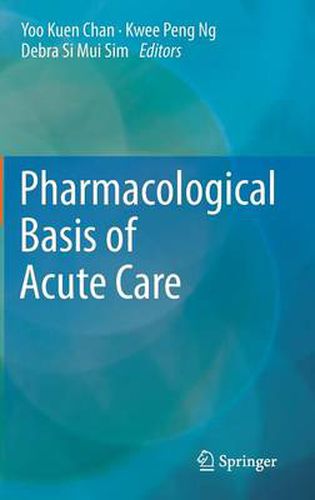Readings Newsletter
Become a Readings Member to make your shopping experience even easier.
Sign in or sign up for free!
You’re not far away from qualifying for FREE standard shipping within Australia
You’ve qualified for FREE standard shipping within Australia
The cart is loading…






This title is printed to order. This book may have been self-published. If so, we cannot guarantee the quality of the content. In the main most books will have gone through the editing process however some may not. We therefore suggest that you be aware of this before ordering this book. If in doubt check either the author or publisher’s details as we are unable to accept any returns unless they are faulty. Please contact us if you have any questions.
This book is the 4th in a series of Acute Care books written with the aim to address the NEEDS of health care providers when handling the acutely ill patients. Globally it has become apparent that the study of pharmacology and subsequent clinical training has not always adequately equipped young doctors with the ability to administer drugs to their patients safely and confidently, particularly in the critically ill patient. Compounding this issue is the lack of resource material related to these pharmacological concepts contained in one book that can help health care providers to understand and manage drug therapy in the acute situation. In spite of progressively newer and more developed protocols, guidelines, algorithms and many other books addressing the technical aspects of what needs to be done, most health care providers still find it difficult to grasp the basic pharmacological knowledge and rationally deliver the CARE that is required in the acute phase of patient management.
The editors/authors have therefore aimed for a book that highlights topics and pharmacological issues pertinent to management of patients in their hour of need. This is a multi-author book but the style has been guided by 3 editors.
The editors have used a different perspective - that of normalizing abnormal physiological processes with pharmacological agents - to address the GAPS in a bedside to bench approach. The details are pared down but important principles/concepts are emphasized.
$9.00 standard shipping within Australia
FREE standard shipping within Australia for orders over $100.00
Express & International shipping calculated at checkout
This title is printed to order. This book may have been self-published. If so, we cannot guarantee the quality of the content. In the main most books will have gone through the editing process however some may not. We therefore suggest that you be aware of this before ordering this book. If in doubt check either the author or publisher’s details as we are unable to accept any returns unless they are faulty. Please contact us if you have any questions.
This book is the 4th in a series of Acute Care books written with the aim to address the NEEDS of health care providers when handling the acutely ill patients. Globally it has become apparent that the study of pharmacology and subsequent clinical training has not always adequately equipped young doctors with the ability to administer drugs to their patients safely and confidently, particularly in the critically ill patient. Compounding this issue is the lack of resource material related to these pharmacological concepts contained in one book that can help health care providers to understand and manage drug therapy in the acute situation. In spite of progressively newer and more developed protocols, guidelines, algorithms and many other books addressing the technical aspects of what needs to be done, most health care providers still find it difficult to grasp the basic pharmacological knowledge and rationally deliver the CARE that is required in the acute phase of patient management.
The editors/authors have therefore aimed for a book that highlights topics and pharmacological issues pertinent to management of patients in their hour of need. This is a multi-author book but the style has been guided by 3 editors.
The editors have used a different perspective - that of normalizing abnormal physiological processes with pharmacological agents - to address the GAPS in a bedside to bench approach. The details are pared down but important principles/concepts are emphasized.